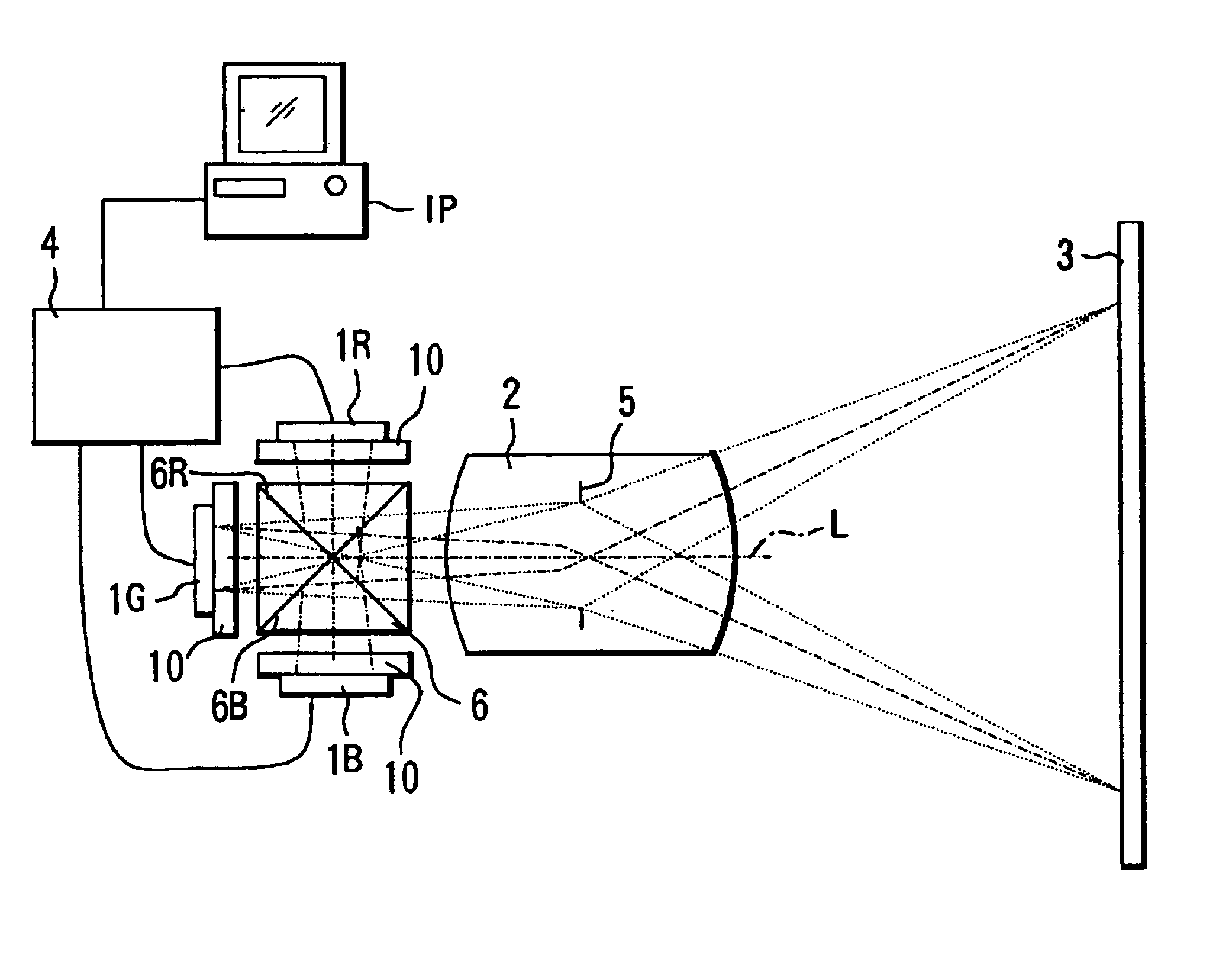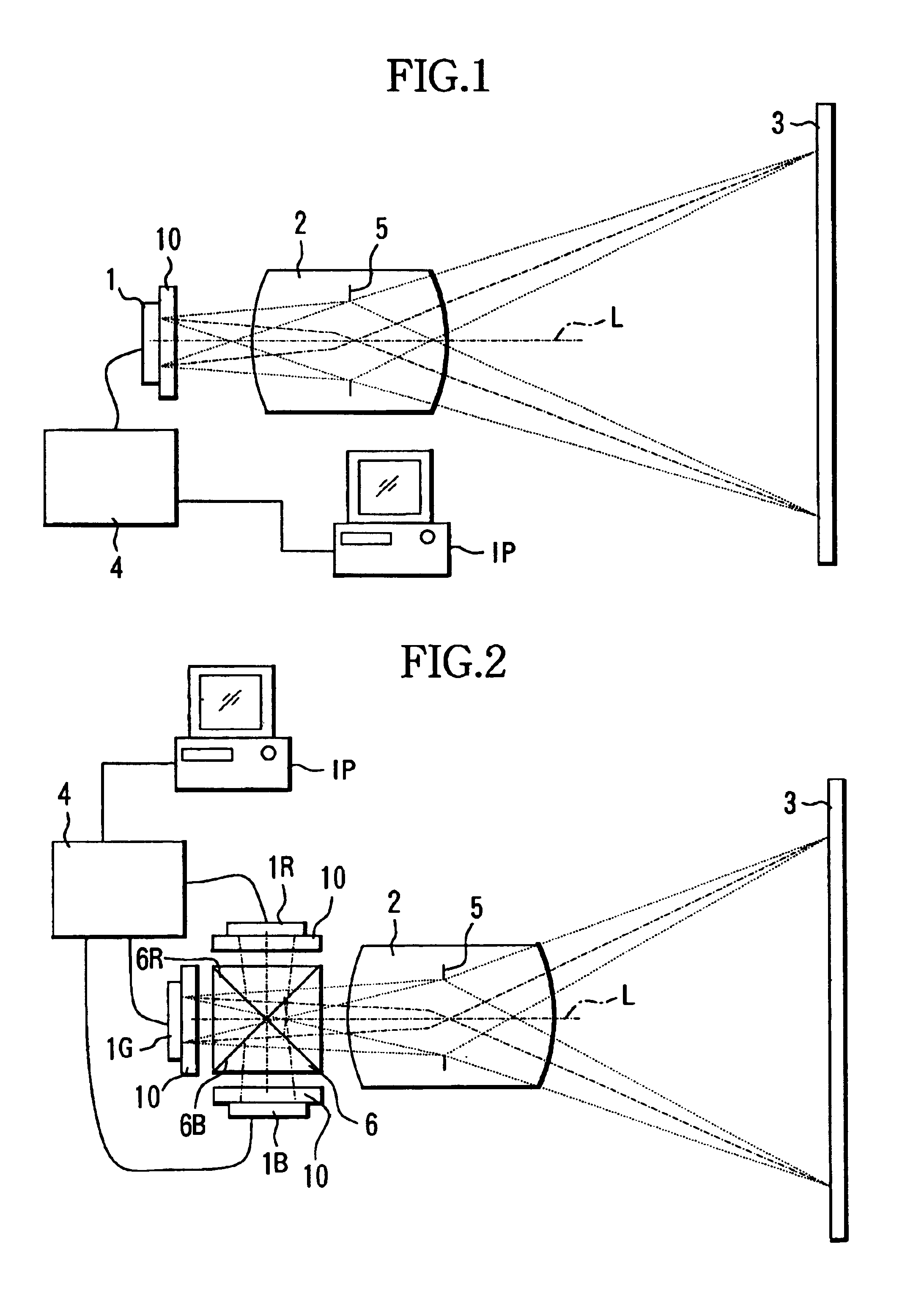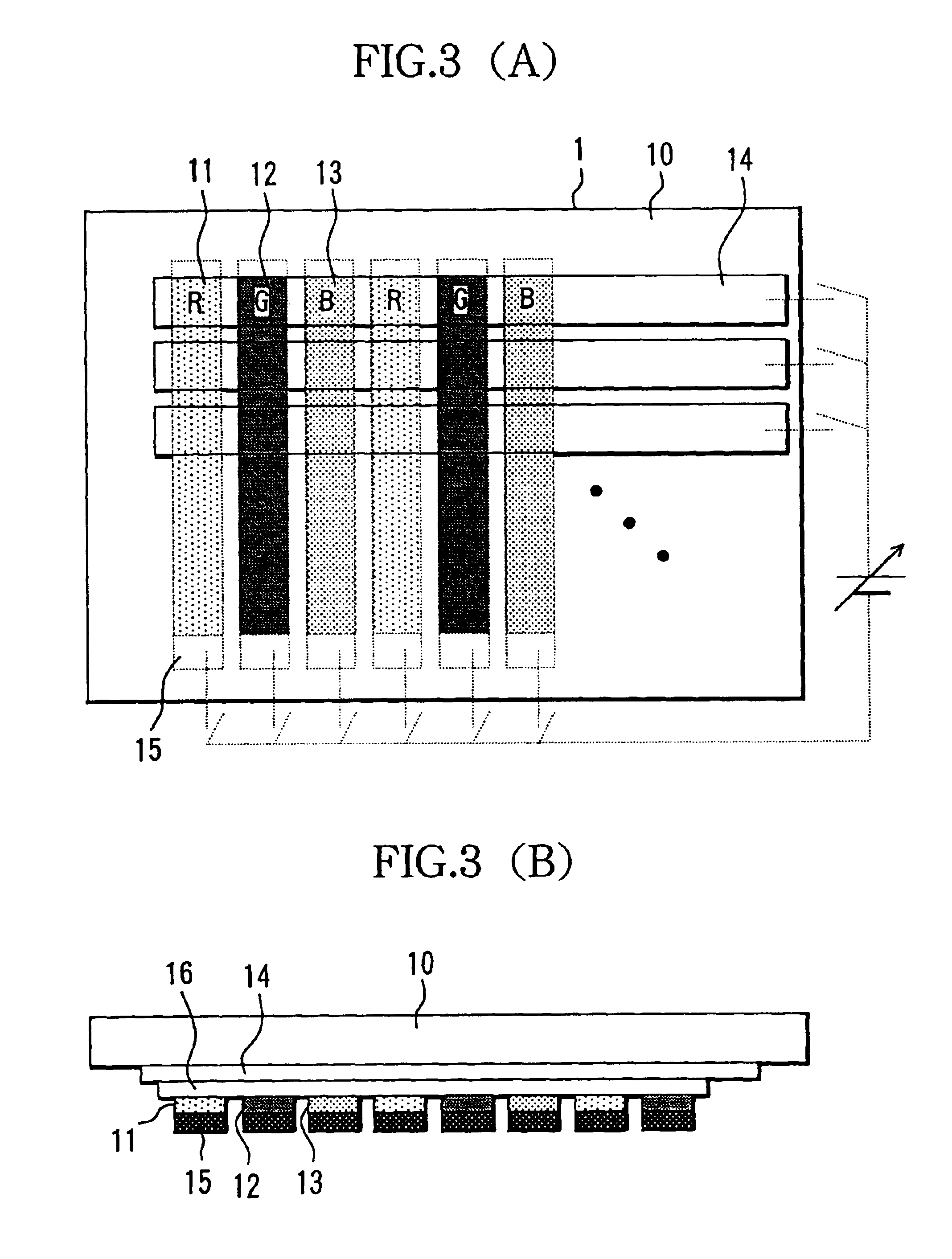Projection type image display apparatus and image display system
a projection optical system and image display technology, applied in the direction of projectors, color television details, instruments, etc., can solve the problems of increasing the size of the lens itself, increasing the distance of the light-emitting position of the organic el element from the optical axis, and high heat produced by light sources, so as to achieve the effect of effectively capturing light emitted and brightening the image without increasing the size and cost of the projection optical system
- Summary
- Abstract
- Description
- Claims
- Application Information
AI Technical Summary
Benefits of technology
Problems solved by technology
Method used
Image
Examples
embodiment 1
(Embodiment 1)
[0062]FIG. 1 is a sectional view of a main optical system of a projector (projection type image display apparatus) which is Embodiment 1 of the present invention.
[0063]Reference numeral 1 denotes an electroluminescence (EL) element that emits light including image information and is an organic EL element as will be explained later. This EL element 1 comprises a plurality of pixels that emit light including image information as light pattern information. A detailed structure of this EL element 1 will be explained later.
[0064]Reference numeral 10 denotes a glass substrate that holds a film structure of the EL element 1.
[0065]Reference numeral 4 denotes a controller made up of a CPU, etc., which electrically controls the EL element 1 according to image signals from an image signal providing apparatus IP such as a personal computer, DVD player, VCR, video camera, TV, and unit of an antenna and tuner that receive image signals. The EL element 1 emits light patterned based o...
embodiment 2
(Embodiment 2)
[0069]FIG. 2 is a sectional view of a main optical system of a projector (projection type image display apparatus) which is Embodiment 2 of the present invention.
[0070]Reference characters 1R, 1G and 1B denote EL elements that emit color beams of red, green and blue which are three primary colors for an additive color mixture image, and are organic EL elements in this embodiment as will be described later. Each of these EL elements 1R, 1G and 1B comprises a plurality of pixels which emit light including image information as light pattern information. The controller 4 sends electric signals to the EL elements 1R, 1G and 1B according to image signals input from an image signal providing apparatus IP (the same as described in Embodiment 1) and controls these EL elements 1R, 1G and 1B. The EL elements 1R, 1G and 1B emit color light beams that they handle respectively based on the electric signals from the controller 4. Specific structures of the EL elements 1R, 1G and 1B w...
embodiment 3
(Embodiment 3)
[0135]FIG. 8 is a sectional view of a main optical system of a projector (projection type image display apparatus) which is Embodiment 3 of the present invention.
[0136]Reference numeral 201 denotes an electroluminescence (EL) element that emits light including image information and is an organic EL element in this embodiment as will be described later. This EL element 201 comprises a plurality of pixels that emit light including image information as a light pattern signal. The detailed structure of this EL element 201 will be described later.
[0137]Reference numeral 210 denotes a glass substrate that holds a film structure of the EL element 201. On the electroluminescent film side of the glass substrate 210 is provided a light emission direction control section 205 with two-dimensionally arranged microprism structures as light emission direction control elements.
[0138]Reference numeral 204 denotes a controller made up of a CPU, etc., which electrically controls the EL e...
PUM
 Login to View More
Login to View More Abstract
Description
Claims
Application Information
 Login to View More
Login to View More - R&D
- Intellectual Property
- Life Sciences
- Materials
- Tech Scout
- Unparalleled Data Quality
- Higher Quality Content
- 60% Fewer Hallucinations
Browse by: Latest US Patents, China's latest patents, Technical Efficacy Thesaurus, Application Domain, Technology Topic, Popular Technical Reports.
© 2025 PatSnap. All rights reserved.Legal|Privacy policy|Modern Slavery Act Transparency Statement|Sitemap|About US| Contact US: help@patsnap.com



